This Friday meet Matt Pearce, an eighth-generation cattle rancher and owner of Pearce Cattle Company in Okeechobee County, Florida. His family has lived in Florida for over 200 years and operated their family-owned cow/calf operation with locations throughout South Florida and Central Georgia. While the ranch keeps him busy, he’s also training and preparing his children, Taylor, Aubrey, and Chandler, to take over as the ninth generation when the time comes.
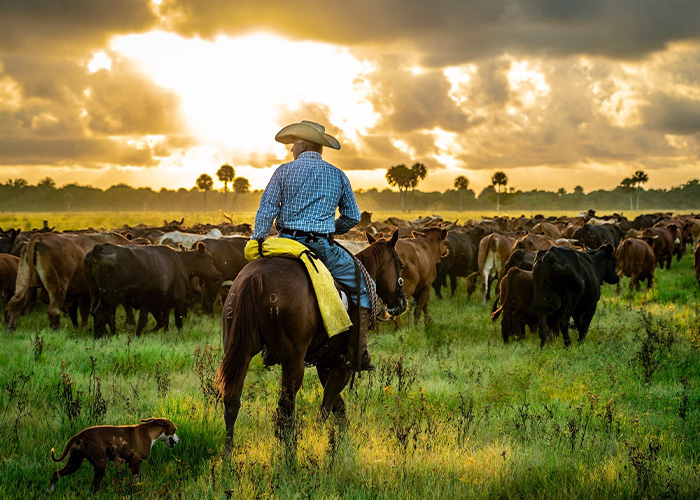
Protecting Florida Wildlife
His passion for ranching and wildlife led Matt to protect and rehydrate his land through USDA’s Natural Resources Conservation Service (NRCS).
Matt manages about 700 head of cattle on over 8,000 acres of leased land that is part of an over 12,000-acre Wetland Reserve Easement (WRE) in South Central Florida. The easement, which Matt enrolled using the Agricultural Conservation Easement Program (ACEP), helps protect, restore, and enhance wetlands, which were degraded by agricultural uses.
“We ranch on the most critical environmental areas in Florida, including near Lake Okeechobee and north of the Everglades,” said Matt. “We’ve done a lot of conservation efforts and land stewardship through private ownership, management of public land, or leasing.”
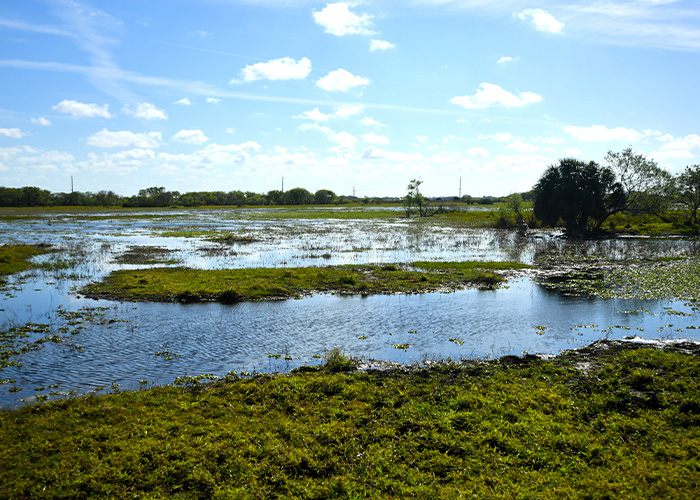
In addition to protecting the land through an easement, Matt used NRCS’ Environmental Quality Incentives Program (EQIP) to treat and remove invasive exotic plant species, such as the Brazilian Pepper and Peruvian Primrose-willow. Additionally, NRCS provided financial and technical assistance for pasture management through rotational grazing, which allows his cattle to graze one pasture field to an optimal level and then move to another pasture to rest the previous field.
“Cattle are always complimentary to wildlife because they build trails and mimic mechanical aeration of the soil and get crustaceans and invertebrates coming out of the ground,” said Matt. “With the help of NRCS financial assistance, we roller chopped the brush. Now, we have a lot of native plants that are coming back because cattle are grazing here.”
Matt said having cattle graze the land helps the wildlife flourish, such as roseate spoonbills, blue herons, and white pelicans.
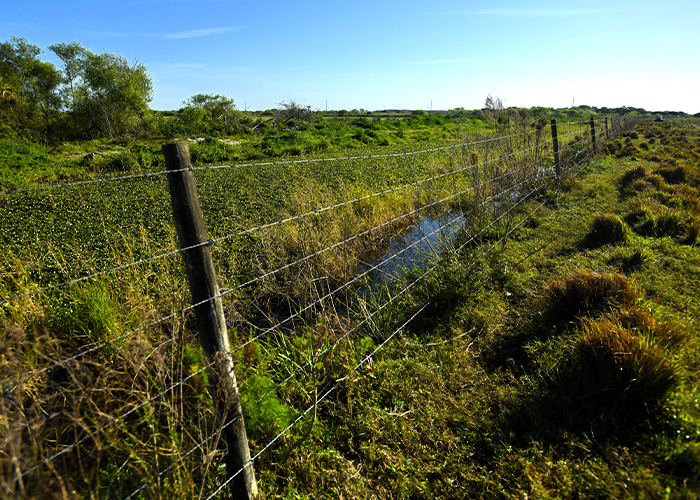
“Where we have cattle, you see wildlife, you see the wading birds – you know, all the things that this Wetlands Reserve Easement was positioned and designed for,” said Matt. “We’re also seeing the benefits of the Everglades Snail Kite (raptor birds), an endangered species that’s thriving here.”
He estimates that eight to ten percent of the Everglades Snail Kite population in Florida is on their leased land. The birds have identifying bands on their legs, and surveys document where they were last seen, according to Matt.
“It’s because of NRCS’ contributions that snail kites are being brought back from being endangered,” said Matt. “We counted 54 nests this year, with over 150 eggs! Nesting season is typically May through July. Last year there were nests visible in August, which is not the norm.”
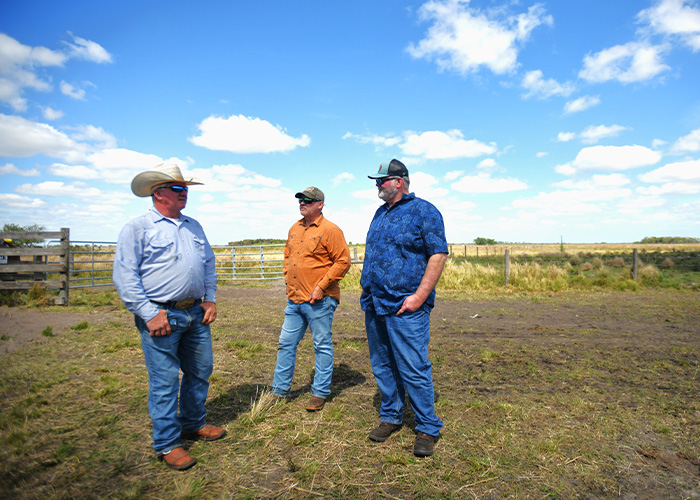
Leading with Conservation
To help generate income on the land, the family operation offers recreational activities such as duck hunting and other waterfowl sports, youth mentoring, firearm safety, and wildlife camping for women’s groups.
“We try to educate people on conservation,” said Matt. “We educate people on the water and stormwater on land, how important it is to somebody in Miami for flood control, for flood protection for aquifer recharge, for wildlife habitat – all those things that they might not understand.”
Matt also planted millet and rice to attract waterfowl, improve wildlife habitat, and improve water recharge. As a result of these conservation efforts, he has seen an increase of various waterfowl and wading birds.
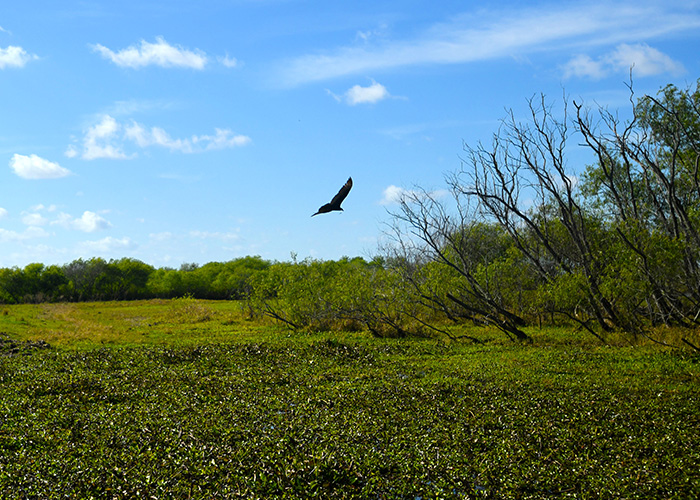
“We want to keep this land better than we found it,” said Matt. “It's rewarding to come out here and see a panther, there are very few of those around. These activities prove that conservation and ranching is a winning combination for landowners and wildlife.”
While Matt is reaching his conservation goals with NRCS, the Livestock Forage Disaster Program and Emergency Assistance for Livestock, Honey Bees, and Farm-raised Fish Program from USDA’s Farm Service Agency has helped his operation recover from multiple natural disaster events over the years.
Matt’s advice for beginning farmers is to look for mentors in the industry.
“You also need to lean on your government programs, like the conservation programs at NRCS. The Farm Service Agency also has a program for beginning new farmers,” he said. “The bank wants to see years of tax returns and profitability. And a first-time farmer doesn't have that. They have zero, but that's what the program is for, to help those beginning farmers get financial assistance.”
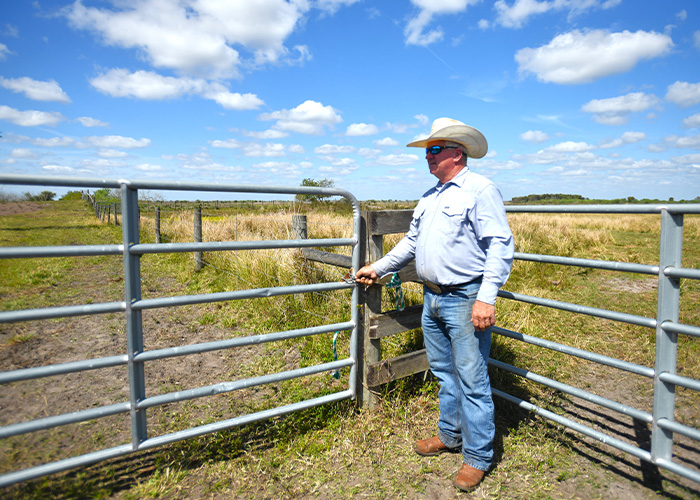
More Information
Visit local farms, ranches, forests, and resource areas through our Fridays on the Farm stories. Meet farmers, producers, and landowners who are working to improve their operations with USDA programs.
USDA offers a variety of risk management, disaster assistance, loan, and conservation programs to help producers weather ups and downs in the market and recover from natural disasters as well as invest in improvements to their operations. Learn about additional programs.
For more information about USDA programs and services, contact your local USDA service center.
Cynthia Portalatin is a public affairs specialist for NRCS in Florida. Read the full story on the NRCS blog.


